In my last blog post, I wrote about improving your photos using motion blur. (I’ll link to it below.) Today, I want to encourage you to create motion blur using panning. Panning is a photography technique where you follow a moving object with your camera and take a photo while using a slow shutter speed.
What does panning look like?
Here’s a full-sized version of the panorama at the top of this post. It’s clear that the motorcycle is moving, because the Seoul street scene is blurry.
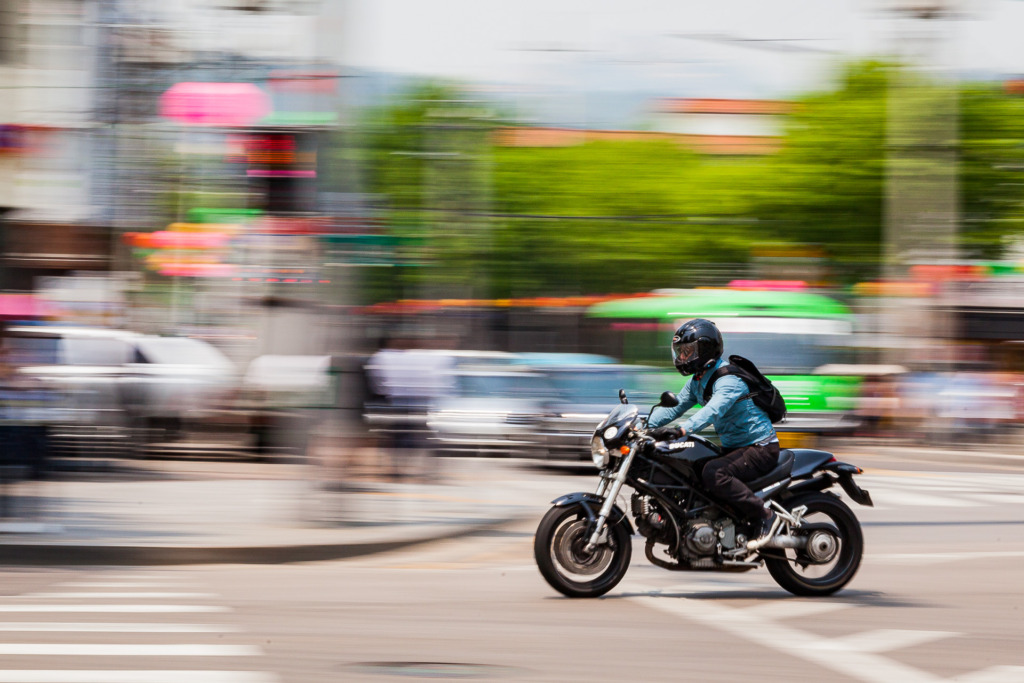
I captured this image by choosing a slow shutter speed of 1/30 second and then following the motorcycle with my camera as it approached. When it was in front of me, I took the photo, while continuing to follow it.
Since the camera doesn’t start to capture the motion until you’ve pressed the shutter button, it’s important to remember to keep the camera moving to create motion blur using panning!
What if you use a fast shutter speed?
Here’s a shot of a motor scooter in Seoul.
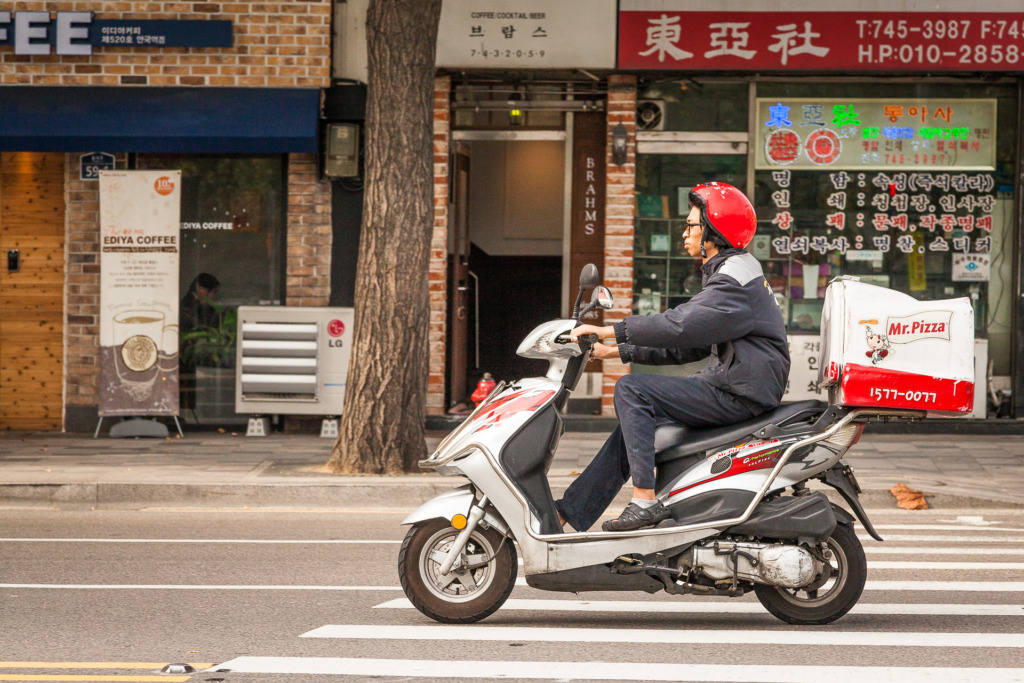
It sure looks like the Mr. Pizza delivery man is standing absolutely still, doesn’t it? Actually, he was speeding along the street when I took this.
The big difference was that I shot this at 1/1600 second. That was the only difference. I followed him as he approached and continued to follow him after I pressed the shutter button.
With the fast shutter speed, no motion was detected. And a boring photo was created!
Creating excitement when you capture motion blur using panning
This shot of a motorcycle moving along Colonial Parkway near Jamestown, Virginia implies speed and power. The blurred bushes and trees behind it make it look like it’s speeding past.
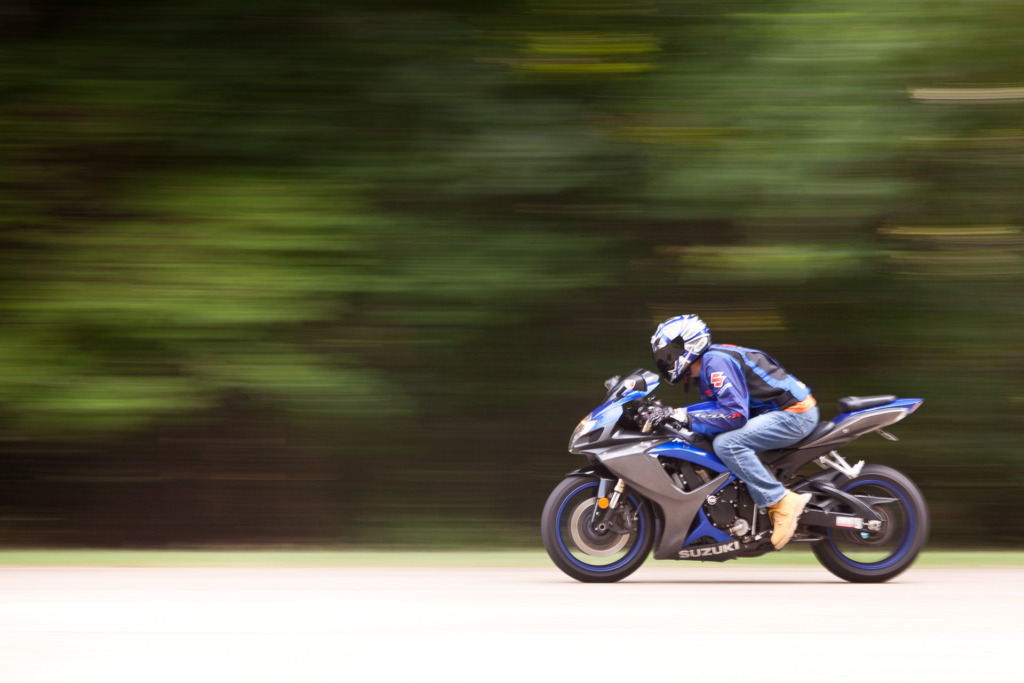
Actually, it wasn’t going particularly fast, but because everything behind it is blurred using panning, you assume that it is.
I shot it at 1/15th second.
Here’s the same person sitting on the motorcycle.
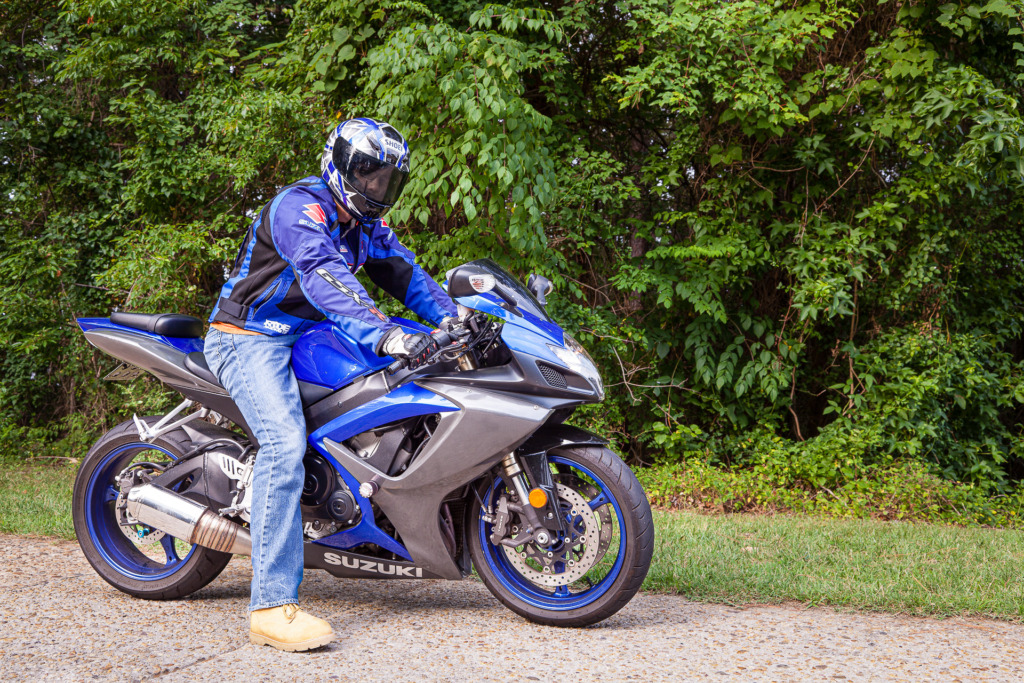
It’s a beautiful portrait, but the rider preferred the moving shot! 😉
Problems with panning
Panning works best if the motion is only going in one direction.
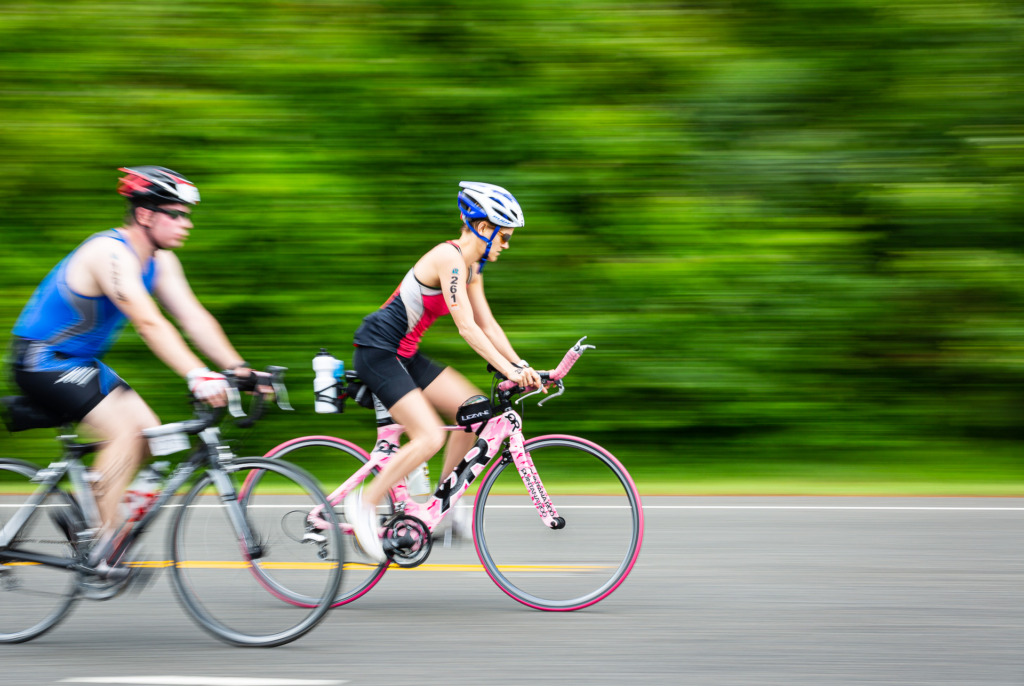
In this shot of two bicycle riders in a triathlon, you can see that one person is more in focus than the other. The man was moving up and down while he was peddling. That introduced motion in an additional direction. There was no way to follow him up and down, as well as forward, so his peddling created motion blur on his body and his bike.
The woman was also peddling, but in a smoother motion, so her body and bike weren’t moving up and down or sideways. Instead, the camera was able to record the trees in the background as a blur using panning and show that she was in motion.
Telling a travel story using panning
I’m always ready to shoot panned shots. Here’s how I do it. I leave my camera set to 1/15 second in Shutter Mode, unless I’m actually using Shutter Mode at the moment. Then, when I see a possibility to capture motion blur using panning, all I have to do is to switch to Shutter mode, brace myself, follow the moving object and shoot. If I’m already shooting in Shutter mode, it takes a little longer to reset the speed.
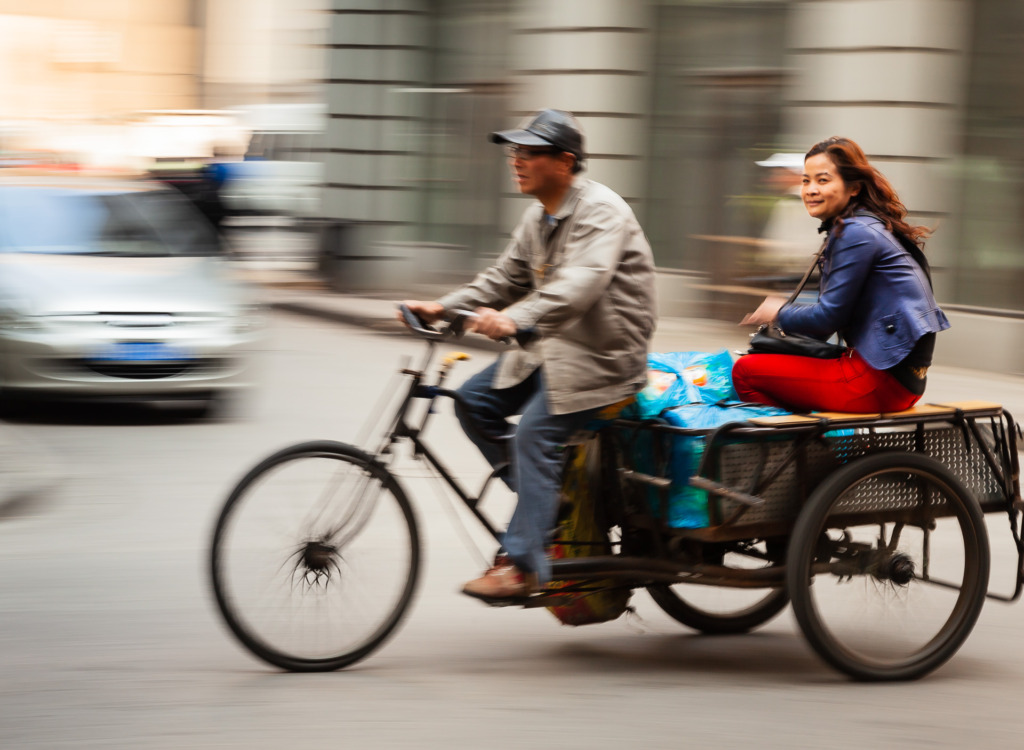
In Shanghai, I saw this cart approaching out of the corner of my eye. I quickly switched modes and got the shot. The best part was that the woman knew I was taking the photo and smiled for me! It was a moment of grace and one of the reasons I love travel photography so much.
Having fun with panning
Sometimes, fun shots can be created using a moving object and a “willing” model.
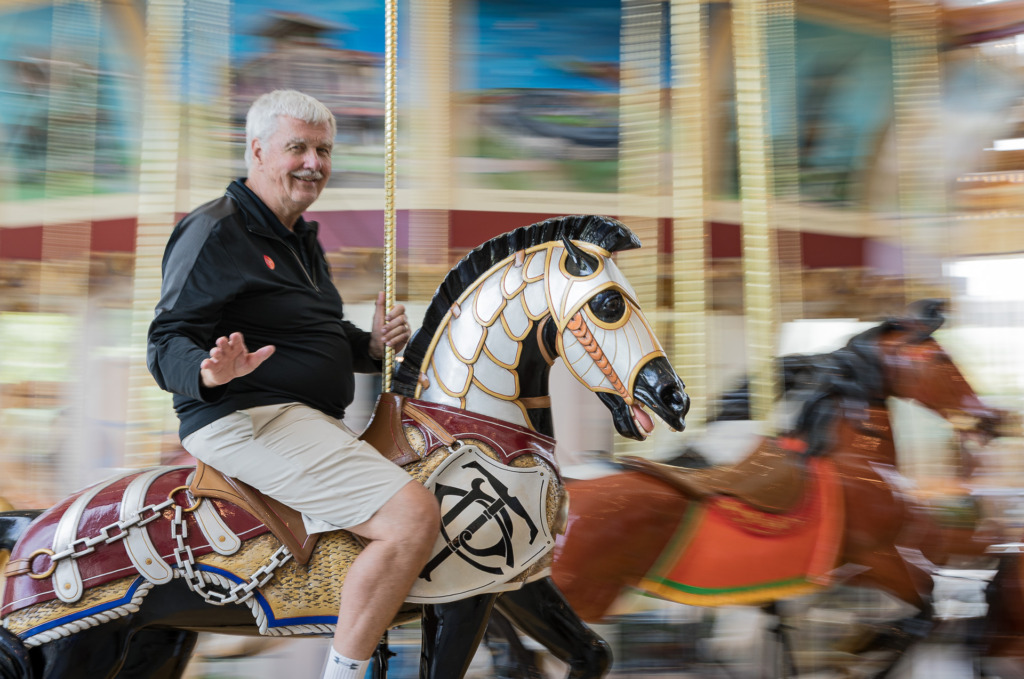
Skip and I were visiting the Cleveland History Center on a trip to Cleveland, Ohio, when I saw the Euclid Beach Park Grand Carousel. I couldn’t resist talking my long-suffering “model” husband into climbing onto a horse for a ride, so I could see if I could capture him with a little motion blur using panning.
Now it’s your turn.
Have you tried panning? What’s your favorite subject? Share in the comments!
If not, it’s time to try. Grab your camera, set it to Shutter Mode with a shutter speed of 1/15 to 1/30 second. Then, remember to keep following your subject with your camera after you have pressed the shutter button.
More reading:
Here’s my blog post about Improving Your Photos with Motion Blur
Here’s more information about the Cleveland History Center. It’s definitely worth a visit if you are in Cleveland.


2 Comments
Trying to capture horses and riders jumping gates, using a Nikon D3400 I have the kit lenses 18-55 and 70-300, it’s usually sunny at the end of the day. Any suggestions as to which lenses would be best, and what distance I should be from them to make the motion blur using panning? Thanks
Hi Jerry,
I’m so sorry to take so long to reply! I have a few ideas for you.
One of the things that makes panning so interesting is the background, so placing yourself in a position where there’s a background behind the horses will help. Some ideas would be trees or fences.
Your longer zoom lens has several advantages:
First, it will keep you out of harms way…
Second, it’s easier to pan if you’re not standing really close to your subject.
Third, your zoom lens will compress the scene and make that interesting background seem closer.
Don’t forget that the motion blur caused by panning doesn’t start until you press the shutter, so keep panning after you press.
Let me know if you have any more questions! I’d love to see one of your favorites!
Caroline